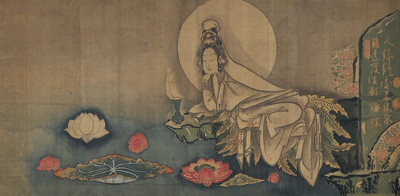Sagawa Art Museum holds “ZENGA: Hakuin and Sengai” as the autumn exhibition.
Hakuin Ekaku (1685-1768) and Sengai Gibon (1750-1837) are Rinzai School of Zen Buddhism priests who were active during the middle of the Edo Period (1603-1868). The both of them endeavored to propagate Zen with the spirit of shujō saido (saving the masses from the torment of the state of darkness and leading them on the path to the enlightenment), and produced numbers of paintings and calligraphy to convey the teachings and experiences of Zen, sometimes in strict and the other times in easily understandable manner. Their dynamic and open-minded paintings and calligraphy seem rich in the taste of a sense of humor at the first glance, while containing various puzzles, riddles and even bitter satires of society. On the basis of the works of both priests, equally lays the expression of the aspects of the truth of Zen and they look similar in appearance, however, the realities of the each priest’s creation are quite different.
Hakuin worked on various types of paintings and calligraphies, such as portraits of Bodhidharma (Daruma in Japanese) and Zen masters, and the numbers of drawings so called “Hakuin Manga.” The distinctive characteristic of them is that the drawings come along with captions or san, which is a text complementing the theme of the drawings. The sources of those texts varied widely; not only the phrases of Chinese classics and quotations from Zen records, but also the lines taken from yōkyoku (Nō play songs) or kyōgen kayō (kyōgen play songs) which were popular at that time period. Hakuin succeeded in depicting the “beyond shape” truth of Zen in his works by constructing them with two elements, picture and word.
On the other hand, Sengai adopted almost everything, secular or sacred, as the theme of his paintings: gods, Buddhas, saints, manners and costumes, animals, and caricatures. As he declared “Gai-ga muhō” (there is a law for the paintings of the world but no laws for Sengai’s paintings), Sengai visualized the truth of Zen easier and friendlier than Hakuin, by using various motifs.
This exhibition provides interpretations of Hakuin and Sengai’s paintings and calligraphy which appear simply “loose and cute” to present-day people, to recognize the messages which were originally intended to be conveyed. By doing that, the charms of zenga (Zen paintings) will be properly introduced and the differences between the two Zen priests will be clarified.
